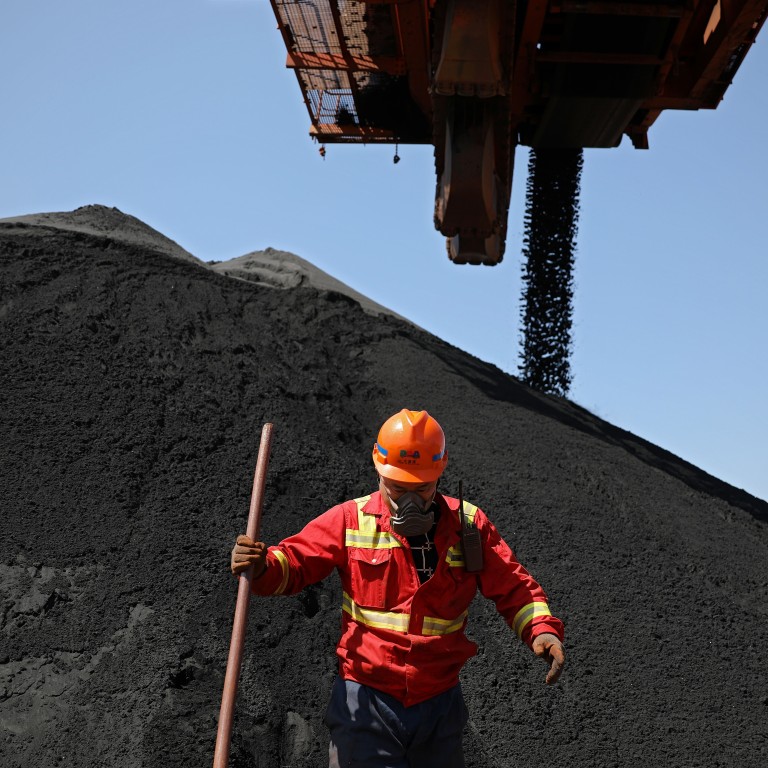
Coronavirus: China’s steel sector steadies, as investors hope for post-pandemic stimulus boom
- Iron ore prices have not fallen in the way oil prices have in 2020, with many in the industry hoping for a construction boom in China
- Beijing has yet to unleash major fiscal stimulus post-coronavirus, but there are signs that the steel industry is stabilising
Discussions about steady iron ore prices and the value of mega miners BHP, Rio Tinto and Fortescue Metal Group have been simmering on the popular Australian stock market trading forum HotCopper in recent weeks.
The price of iron ore has been hovering around US$80 a tonne, which while lower than its five-year high of around US$120 a tonne last year, was still better than the ravaged crude oil price, as Chinese steel producers roared back into action.
Others were less bullish and preferred to wait it out, having seen oil prices crushed by shutdowns and curbs in activity and travel.
“I’m not sure iron ore would crash like oil,” one investor said.
Another one said: “Huge steel inventories are accumulating at the steel manufacturing plants. Whether these result in a drop of iron ore demand in the short or long term is yet to be seen.”
“Steel prices are a key economic signal for China, a barometer of the health of the construction cycle that drives much industrial activity,” said Gavekal Dragonomics’ analyst Rosealea Yeo in a note. “Therefore it is significant that various measures of steel prices, after falling 10 per cent from their late-November peak and hitting their lowest levels since 2017, have stabilised since the beginning of April.”
But this inventory was slowly used up in March and prices have now reached 3,600 yuan (US$508.59) a tonne, compared to 3,750 yuan a tonne last year.
There was an improvement in construction equipment operating hours in March, and there had been more construction starts in March compared to February’s write-off, Yeo said.
“The decline in construction starts narrowed to 10.5 per cent [in March] from 45 per cent in the first two months of the year. Demand for construction materials other than steel also seems to be picking up,” Yeo said.
Further price risks on Chinese steel products are unlikely as rising inventory levels peaked by end-March with signs of destocking starting in April
Analysts at Fitch Ratings also observed the same consumption of steel inventory – so-called destocking – and price fall in early April.
“Further price risks on Chinese steel products are unlikely as rising inventory levels peaked by end-March with signs of destocking starting in April,” read a Fitch report, adding that the fundamentals of the Chinese steel market should improve in the second half of the year as the impact of the pandemic wanes in China.
For example, two affiliates of Ansteel, a major Chinese steel company, completed delivery of 88,000 tonnes of X80M steel to be used in the China-Russia east-route natural gas pipeline project last week.
While this is an existing project, there are some soft signs that fresh domestic steel demand was starting to ramp up, even after fixed asset investment fell 16.1 per cent in the first quarter, official Chinese data showed.
For a start, China Iron & Steel Association confirmed last week that China’s crude steel output in early April had risen by just over 5 per cent compared to late-March, and was up by just under 2 per cent compared to the same time last year.
But the longevity of any recovery in the steel sector now depends on whether there is consistent new demand, both in China and from other countries.
Domestically, analysts said both stimulus infrastructure spending and an increase in real estate sales and construction would be crucial.
Property sales were still very weak particularly in large cities but there was some growth in sales in secondary Chinese cities, Yeo said. The decline in property sales had improved to a 14 per cent drop from a 40 per cent slump in January and February.
“This was despite a continued 37 per cent decline in the daily property sales of 30 major cities suggesting that sales rebound has been driven by smaller cities which relaxed lockdown measures earlier than high-profile markets,” Yeo said.
“A continued recovery outside the major cities could keep nationwide sales on an improving trajectory.”

